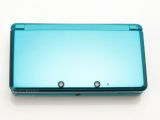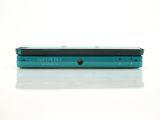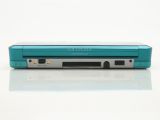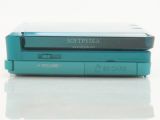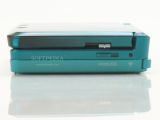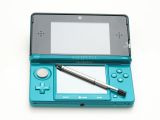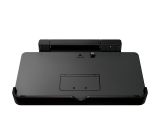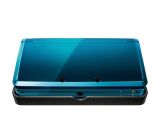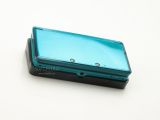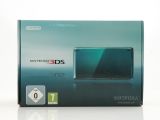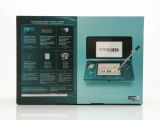The Nintendo DS is one of the best-selling consoles of all time, with its various iterations managing to reach the hands of hundreds of millions of gamers all around the world.
With its next generation device, the Nintendo 3DS, the Japanese company wanted not only to add more powerful hardware, but also to introduce a first for mass market electronics: a glasses-free 3D feature.
Up until now, 3D gaming meant you had to have a compatible console, like a PlayStation 3, a compatible 3DTV and a set of special glasses that allowed you to enjoy the effect. Nintendo decided this strategy was way too clunky, so it used in its 3DS a special, autostereosopic screen that allows it to display 3D without the necessity of active shutter glasses.
Did Nintendo manage to deliver on its glasses-free 3D promise or will the 3DS join the ill-fated Virtual Boy, a failed attempt from the company to enter 3D gaming back in 1995? Let's find out.
This will be a pure hardware review, detailing my experience with the 3DS and its features, with the 3D one in particular. A software review, detailing all of the applications included in the 3DS will arrive later this week.
Looks and Feel At first, when you see the Nintendo 3DS from the outside, it doesn't seem all that important. Its exterior finish is nice and the Aqua Blue color conveys an almost candy-like texture to the console. What's more, the exterior isn't a fingerprint magnet, at least in the blue version, so you don't need to carry around a cleaning cloth
When you open it up, the wider, 3D-enabled screen looks quite attractive, largely because of its black enclosure, while the touchscreen and the buttons of the device, located in the lower side, retain the familiar Nintendo DS feel.
The console feels almost as solid as previous DS versions, like the DS Lite or DSi, and a bit heavier than them, clocking in at 230 grams. It's still much smaller and lighter than the newer DSi XL, but that's a special case.
Almost every facet of the device has some sort of functionality built into it, with the lower front part including things like a headphone jack, LED lights for charging and power functions, as well as the microphone.
On the left side, you'll find a volume slider as well as the slot for the SD card, which comes already filled with a 2GB card, included in the retail package. The right side includes a switch for the wireless connection and a LED light which signals Wi-Fi transfers.
The back of the device has the main game card slot, which also fits regular DS titles, as well as the charging port, an infrared one and a small slot for the stylus, which is extendable, this time around.
On the inside, the lower part houses the traditional buttons, including the four-way D-Pad, the traditional BAYX four-button cluster, a power button and, new with the 3DS, an analog circle pad, similar to the small nub on the PlayStation Portable. The touchscreen dominates this half, with three buttons positioned on its lower part indicating Select, Home and Start.
The top lid houses the main selling point of the 3DS, its autostereoscopic screen, flanked by two speakers on either side, the 3D effect slider, on the right, and a camera for frontal shots on top.
The hinge mechanism is pretty good, but I would've liked to see it have more stopping points along its tilt, not just at a specified position and at the end of its turning circle.
In your hands, the 3DS feels pretty good, especially when gaming, but it all depends on your position, whether you're standing upright in a chair or laid back on a bed, for example.
The biggest advantage of this new setup is the addition of the circle pad, which feels great, and handles beautifully. Its rubber texture grips your thumb while the concave form makes it great for platformers or brawlers that weren't all that good to control with the regular D-Pad. Unlike the analog nub on the PSP, this one isn't textured, and is large enough to make sure your thumb won't slip off.
The rest of the buttons feel adequately rigid and take care of their attributes. The positioning of three buttons on the lower side of the touchscreen could be classified as a flaw, because you tend to think they're touch-sensitive and try to gently push them with the stylus.
Speaking of the stylus, the 3DS has an extendable (telescopic one) which feels pretty good, but, unfortunately, its slot is positioned right on the back of the device, meaning you kind of need to flip the device in order to pull it out safely.
Overall, in terms of its exterior and feel, the 3DS isn't that much different from your regular DS version, but packs a few new tricks, with the circle pad in particular.
Gaming and the 3D Experience Once you start up the console, however, you immediately realize that it's much more than an overhauled DS edition. The 3D effect is nothing short of staggering when you first see it, mainly because it's hard to imagine that you are enjoying such an effect without having any sort of glasses on your nose.
I've been to quite a lot of 3D movies and played a few 3D games, but knowing that you have such a technology in your hands, even on a small screen, is breathtaking.
Sadly, even for a person who's seen his fair share of 3D entertainment and has perfect eyesight, the 3D effect, when cranked up to full power, can get a bit tiring. Setting it at the middle point, however, produced the best results, both for me and my colleagues, still rendering an impressive 3D effect yet keeping it within tolerable levels.
Your eyes will also start to feel tired when you're forced to interact with both the top, 3D screen and the lower, non-3D touchscreen. Luckily, these moments are few and far in-between, at least from my experience.
The 3D effect, however, is severely affected by your position towards the screen. If you move your head slightly around, the illusion of 3D will break. Many of its built-in applications do require you to move (the augmented reality one or the Face Raiders game), so unless you keep your head and the 3DS perfectly aligned, you might want to turn it down to 2D mode.
In the end, the 3D effect and your experience with it depends largely on what game you're going to play. If it doesn’t require a lot of movement, except for the regular button pushing, and manages to display the 3D effects in a polished way, then you're going to have lots of fun with the device. If it forces you to move around and isn't so optimized for 3D, then you might be better off just skipping the third dimension.
The touchscreen is pretty good, but, considering the technology in mobile phones these days, perhaps it's time for Nintendo to start using a screen that doesn't require a stylus. You can use your fingers, but you need a pretty hefty push so that the screen registers your input.
Battery Life and Special Features One of the key issues of the Nintendo 3DS is its battery life. From my experience with the device, it pretty much follows the same estimates released by Nintendo itself.
With 3D enabled and the screen set at a brightness setting of 4 or 5 (from a maximum of five), the battery will last from 3 to 5 hours, largely depending on how demanding the game is.
If you opt to play without 3D and set your brightness level to 3 or lower (it's still perfectly viewable), then you can get somewhere around 8 to 9 hours from its battery.
Nintendo makes it easier to charge up the device, however, as the retail package includes a special charging cradle, which is very handy and allows you to just slide it in and not worry about a low battery.
Speaking of the retail package, it includes the actual Nintendo 3DS, a charger, similar to the one from older DS versions, the cradle mentioned above, an array of manuals and a set of augmented reality cards for the special application included in its software. Inside the 3DS you'll find the extendable stylus and a 2GB SD card, which can be swapped out with another SD or SDHC one.
Conclusion In the end, from a hardware point of view, the Nintendo 3DS is a solid handheld device, while its 3D features are nothing short of breathtaking, at first glance. After a while, you might get bored with the technology, but you can always turn it off and enjoy the device as a more DS version, which a few key improvements, like the circle pad.
Stay tuned for our Nintendo 3DS software review later this week.
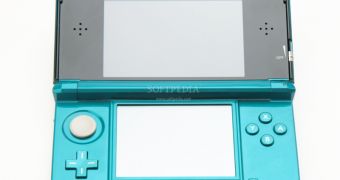
 14 DAY TRIAL //
14 DAY TRIAL // 
